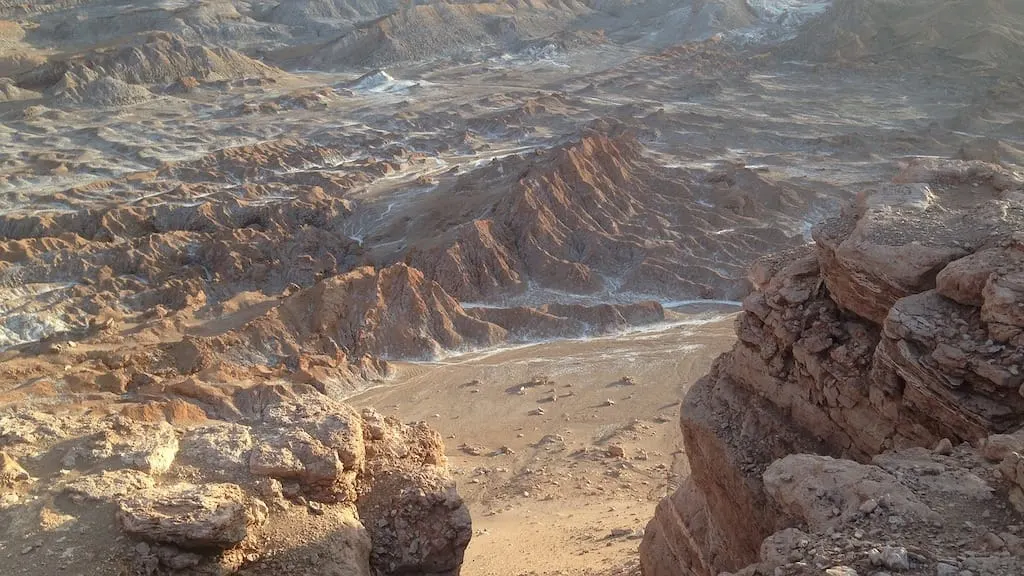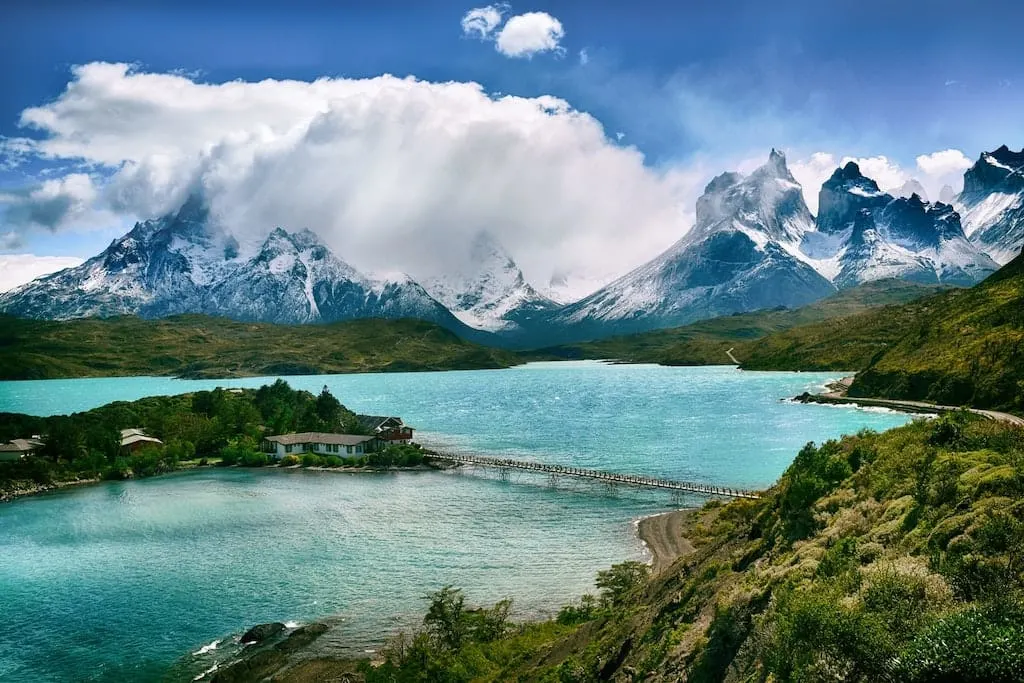Expert travel storyteller Jordan Adkins, founder of InspiredByMaps.com, brings a decade of adventures across 101 countries and 450+ UNESCO sites into rich, off-the-beaten-path narratives, melding ecological expertise with genuine, seasoned travel insights. His full bio can be found here.
Chile is one of the world’s most underrated travel destinations, a country of extremes from the sophisticated vineyards of Valle del Maipo and the urban jungle of Santiago to the barren Atacama Desert, isolated Easter Island, and the rugged mountain peaks of Patagonia.
The world’s longest country measuring 4,620km (2,647mi) from north to south, there is so much to see in Chile — but discovering the most famous landmarks of Chile is an excellent place to start…
This South American country is blends wilderness and elegance in a way we never thought possible before. At its heart is an arts and culture powerhouse (and capital), Santiago de Chile, but when you leave this cosmopolitan megapolis, you’ll discover wild seascapes, snow-capped mountains, winding rivers, exotic forests, and even a strangely appealing desert landscape compared to the Moon or Mars.
There are just so many places to visit in Chile; you could spend a lifetime explore its riches and only just scratch the surface. This is why we have developed this cheat sheet to help you with your travels.
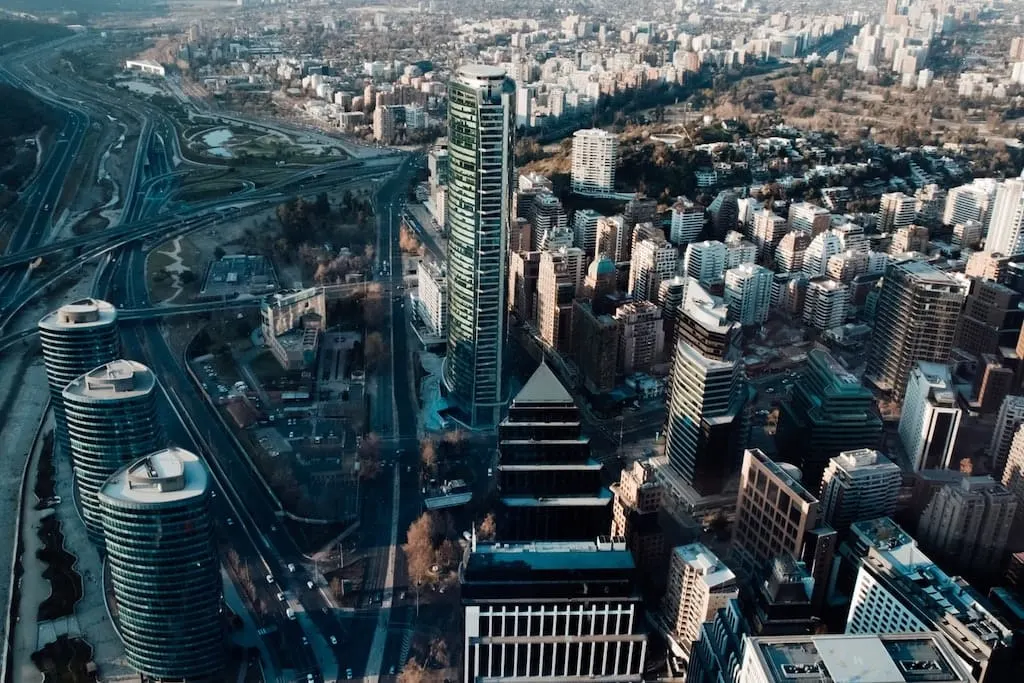
But first – what is a landmark?
A landmark is a recognizable natural or artificial feature that typically stands out from its environment and has become a local or national symbol. For modern tourists, a landmark is useful for navigation – in terms of both being a physical waypoint and in trying to help you organize your itinerary.
Getting the off-the-beaten-track is all well and good, but at the end of the day – there are some famous spots you just have to see when you visit a country. Think about the canals of Amsterdam or the Everglades in Florida. Places so iconic, you couldn’t miss them if you tried.
And Chile has more than its fair share of these landmarks…
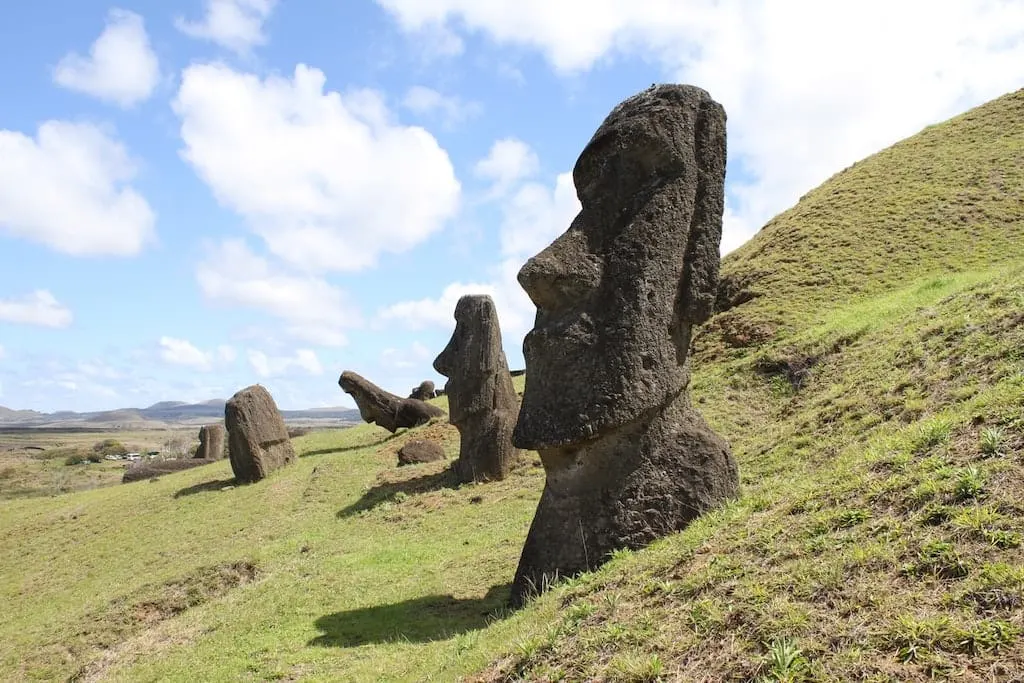 When approaching a trip to this land of penguins, wine, and mountains, you will want to tick off as many famous Chilean landmarks as you can – and the best way is to do that is often by renting a car, taking a tour, or flying around. Long bus trips are also pretty inevitable, and we recommend bookaway to search help digest all the transport options.
When approaching a trip to this land of penguins, wine, and mountains, you will want to tick off as many famous Chilean landmarks as you can – and the best way is to do that is often by renting a car, taking a tour, or flying around. Long bus trips are also pretty inevitable, and we recommend bookaway to search help digest all the transport options.
There is a lot to explore in Chile…and no list of famous Chilean landmarks could ever be exhaustive. But, we have tried to get the highlights by putting a call out to our few travel bloggers – and asking them to tell us about their favorite.
This way, you have a reasonable frame of reference to inspire your Chile travels where you can choose a few landmarks that you absolutely cannot miss… or cram as many as possible into one trip.
If you plan it right and have enough time, you might just hit them all — plus discover plenty more of your own highlights of Chile while you’re at it!
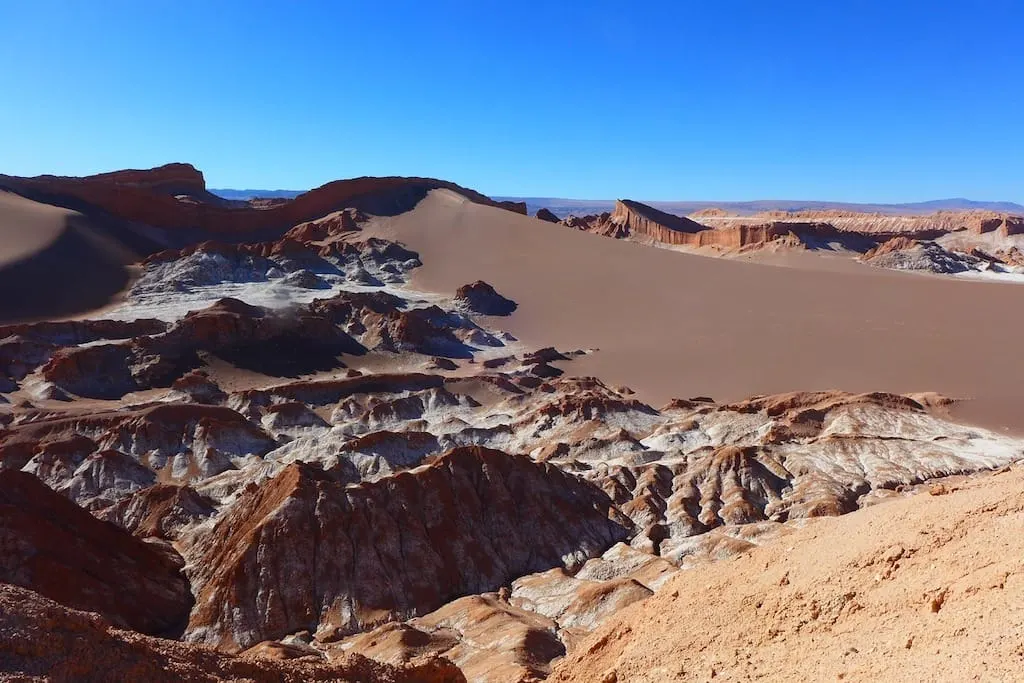
Page Contents
Cajon del Maipo
The Cajón del Maipo is a picturesque river valley carved out of the Andes by the Río Maipo where stunning greenery (and wild horses) cling to the steep, rocky walls of the gorge. Located only 25km (as the crow flies) from Santiago, it’s popular for so many activities – camping, hiking, climbing, cycling, rafting, skiing, and more.
While the area has many highlights, one of the top has to be El Yeso Dam, a reservoir located at 2500m above sea level, which provides drinking water for the thirsty Santiago! The landscape was superb and fun to explore, and only gets more beautiful in the winter when it is dusted in snow and ice.
If you’re a bit more adventurous, there is also the epic Mirador del Morado trail, which is great for birdwatching and exploring various flora and fauna, or you could make the trek to the El Morado Glacier. For a more relaxed experience here, simply stop by one of the many hot springs abundant in the area or even consider the famous vineyard of Concha Y Toro, which is also conveniently located in Cajon del Maipo.
With easy access from Santiago de Chile and so many options for activities, it is no wonder this gorgeous valley has become a natural landmark of Chile — and one of its most popular tourist destinations.
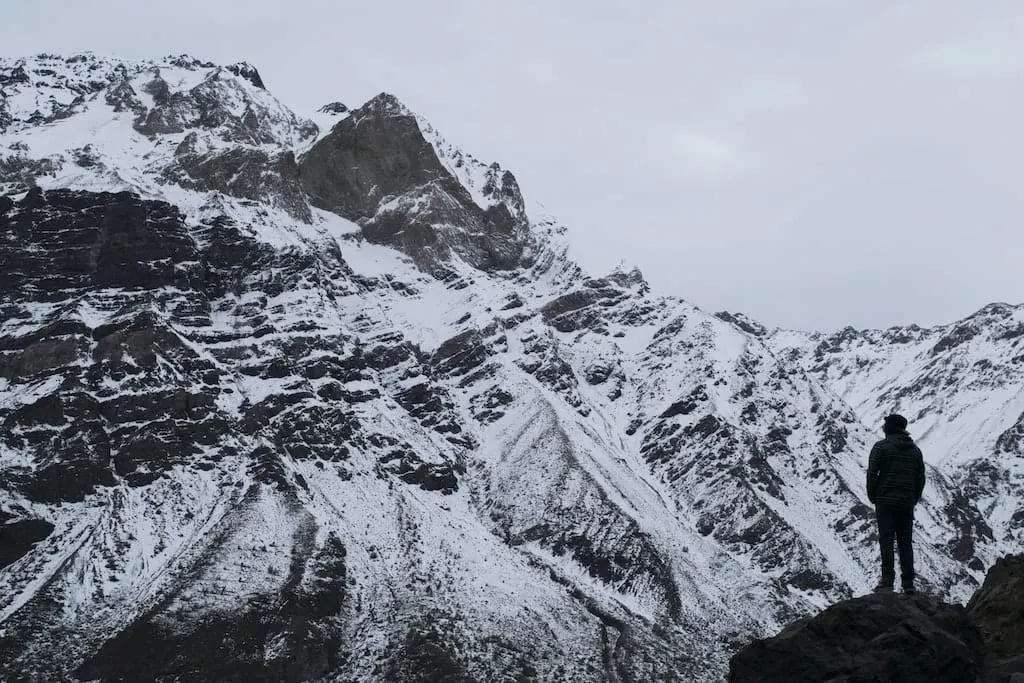
Carretera Austral
The Carretera Austral is one of the most famous landmarks in Chile. This unique road is situated in the south of the country. It starts at Puerto Montt and finishes 1200 km later at Villa O’Higgins.
The Carretera connects the vast region of the Chilean Patagonia with the rest of the country. Construction of one of the southernmost highways in the world was the country’s biggest developing project of the 20th century. Construction started in 1976.
The last stretch to Villa O’Higgins was finished by 2000. Several parts of the region previously accessible only by sea could be reached by road without going through Argentinian territory. The total cost of the project that involved more than 10 000 workers was 300 million dollars.
Traveling the Carretera Austral is a life-time experience. This unspoiled region is a real paradise for nature lovers and hiking enthusiasts. The scenery along the Carretera is truly incredible: indigenous forest, turquoise lakes, crystal-clear rivers, dramatic fjords, and hidden waterfalls. Diverse wildlife in Chilean Patagonia is another reason to travel the Carretera Austral.
Here you can see guanacos, foxes, skunks, deer, armadillos, hares, many birds, including the Andean condor, and if you’re very lucky, even the elusive puma.
There are several ways of exploring the route; cycling, hitchhiking, renting a car, or traveling by bus. Cycling the Carretera is the ultimate adventure experience, though it can get quite challenging due to unpredictable weather and long distances.
Summer months between December and March are the best time for traveling the Carretera Austral. If you want to skip holiday crowds, January is not the best month for visiting the region; thousands of Chileans come here at this time to spend their holiday.
Explored by Campbell & Alya from Stingy Nomads
![]()
Cerro San Cristobal
When looking for landmarks in Chile, you can be sure to find some of the most famous in the capital Santiago. One of the most popular with new visitors is San Cristóbal Hill, which at 850m above sea level, is a landmark that allows you to get panoramic views as far as the eye can see over the city of Santiago.
For some, the most exciting bit is the cable car (which stops off at different points) you take to get to the top, but it doesn’t stop there. It is advised you get there early, especially during the summertime, and it helps by knowing exactly where to stay in Santiago for a more tranquil experience arriving there, especially if you wish to avoid large queues which often start from early in the morning.
As you elevate further, you’ll encounter the Chilean National Zoo (which you pay to enter), a swimming pool, and even some Japanese-style gardens.
Carry some walking shoes as there is a fair bit of hiking to do to be able to step up to the foothills; if you prefer, you can always rent a bicycle too. Within a short but intense wander around, you get the chance to see more landmarks situated at the top of the foothills, including untold churches, crypts, and the most important of all, the Virgin of the Immaculate Conception.
All in all, San Cristóbal Hill offers you a unique viewpoint and experience of Santiago that you simply will not forget on any trip to Chile.
Explored by Daniel James from Layer Culture
![]()
Cuernos del Paine
The Cuernos del Paine are possibly the most well-known natural landmark in all of South America. The three “horns” feature on multiple postcards and travel posters and epitomize Chile’s Torres del Paine National Park perhaps more than the eponymous Torres (towers) del Paine does.
Paine means “blue” in the native Tehuelche (Aonikenk) language, and Cuernos means “horns” in Spanish, so they are the “Blue Horns.” The three main peaks that form the Cuernos del Paine rise up and tower above the bright aqua blue Lago (Lake) Pehoe and the grey Lago Nordenskol. Their dramatic beauty comes from their location, their size, and the broad band of pale exposed granite rock that contracts with their dark bases and distinctive dark craggy tops.
They dominate the central part of the national park and can be seen from many vantage points throughout most of the park. The best way to see them up close is to hike up French Valley, which stretches between them and French Glacier. The hike is challenging, but you will be rewarded with breath-taking views of the Cuernos del Paine, French Glacier, and brightly colored alpine lakes.
For more panoramic views, there are several great options. To see the views from the comfort of a hotel, the Salto Chico Explora hotel and Hosteria Lago Pehoe both have stunning views and are top picks for the best places to stay in Torres del Paine National Park.
For something more active, there are several easy hikes with stunning views. Top picks are Condor Lookout, which is often very windy, but the views are stunning, and the Mirador Cuernos del Paine (Cuernos del Paine Lookout), which you can access from the parking area at the Salto Grande (Big Waterfall).
They can often be covered in clouds, but when the weather is clear, you will be rewarded with some of the most incredible views on the entire planet!
Explored by James Ian from Travel Collecting
![]()
Easter Island Heads
The monolithic Mo’ ai, or Moai, carved human figures of Easter Island are one of Chile’s most enduring landmarks – even if they are located around 2182 miles away from the coast of the mainland in eastern Polynesia.
Carved between the years 1250 and 1500 by the people Rapa Nui, there are many places to views the Moai, including the famous mo’ai quarry where many still lie today. Hundreds of these heads were also transported from here and placed all around the island’s periphery on stone platforms called ahu, giving ample viewing opportunities for adventurous tourists who make the effort to get out here.
Ahu Tongariki is the most spectacular platform of Easter Island and absolutely not to be missed. It is the place to go from sunrise when the sun rises behind the Moai.
For the greatest visual impact, visit between 21 December, the “Summer Solstice,” and 21 March, the “Autumn Equinox,” when the sun rises directly behind the giant stone sculptures, creating an unforgettable sight. The nearby Poike volcano and the Pacific Ocean waves crashing behind give an air of majesty and mystery unmatched by almost any other travel experience on Earth.
An almost religious experience, this sunrise will make you genuinely consider your place and privilege in the world.
Tahai, just along the coast from Hanga Roa, is also a great spot to watch the sunset after a hectic day exploring the island. The set of three ahus is located in a peaceful waterfront meadow where you can watch the sunset behind the statues. It is popular with locals and tourists alike, and nice to see people having a picnic and just enjoying being together.
Also, it is a great spot to people watch and only being 15 mins walk from town. Perfect for doing on the first day after a flight into the island if you feel exhausted but still want to get your first glimpse of the Moai.
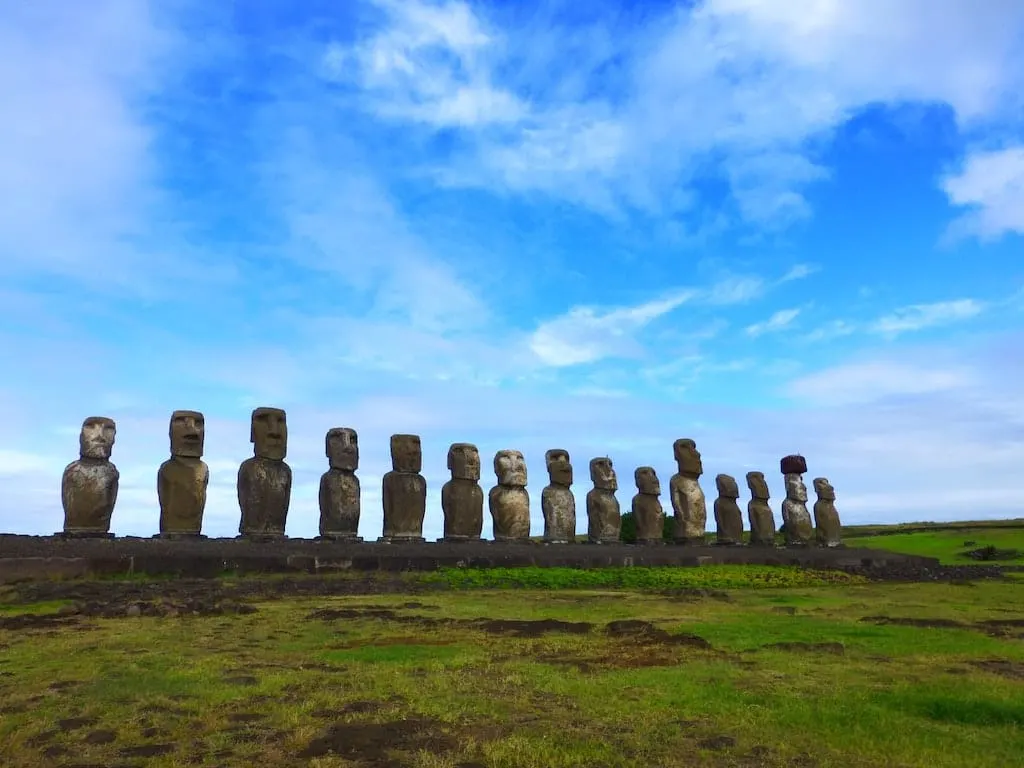
El Tatio Geysers
The Atacama Desert in Chile is named the driest place on Earth with perpetual sunlight and a lunar landscape. Being a gateway to Bolivia from Chile, there is also an abundance of sights and activities from lagoons, valleys, hiking to stargazing. El Taito Geyser is one of the most popular spectacles in the desert, and it is unique in many ways.
While El Taito Geysers may not be the biggest or the most powerful in the world, El Taito outnumbers them with a total of five hundred steaming surface manifestations. When steam and hot water eject from the holes on the ground, this is known as a surface thermal manifestation phenomenon.
To visit the geysers from San Pedro de Atacama, the best way is to join a local tour. Because the geysers are the most active in the morning, the tour usually starts picking up at 5 am in the morning, and then ascend from 2,500 meters to 4,320 meters above sea level, where the geysers are located.
Due to the high altitude, the temperature drops dramatically to about 5°C in the morning; even the day temperature is above 28°C during the summer. Besides, the sudden change of altitude may cause high altitude reactions that tourists should be aware of.
Having said that, the incredible views and volcanic actions is totally worth a visit. Walking through the vents of steam on the desertic landscape is like exploring another planet. The manifestation comes with different types, including hot spring, boiling spring, bubbling spring, hot pool, mud pool, geyser, perpetual spouter, fumarole, and many more.
Don’t forget to pay attention to the diverse flora and fauna that inhabit this place – you may spot native birds soaring in the sky, or a vicuña grazing in the field.
Explored by Kenny from Knycx Journeying
![]()
Gran Torre Santiago
Gran Torre Santiago, or the Great Tower of Santiago, dominates the skyline of Chile’s capital city. Finished in 2013 and opened in 2015, this tower – built high in the Andes Mountains – is the tallest building in South America. It is located in Santiago’s upscale Providencia region and is easily accessible by metro, car, or foot.
The tower was built as part of the Costanera Center, which is Latin America’s largest shopping mall. The mall itself comprises four spacious ground floors filled with international retailers and well-known restaurants. An additional 58 floors bring you to the top of Gran Torre Santiago, towering at over 300 m tall.
Though the tower is filled with shops, restaurants, offices, and hotels, the top two floors are reserved for the Sky Costanera experience. Visitors wishing to view Chile’s capital city from its highest manmade point can purchase tickets to Sky Costanera in the lobby, located in the shopping mall.
The view from the top two floors of Gran Torre Santiago are some of the best in the city. You can look out to the Andes Mountains to the North and East, the vineyards to the South, San Cristobal Hill on the West, and all of Santiago’s neighborhoods in between. The lower of the two floors provides information about what you are viewing on each side of the tower on panels at the windows.
The upper floor features large glass windows leading up to an open roof so that you are essentially standing outside! If you visit Sky Costanera during the day to take in the views, return at night to experience the lights of the city as well as the colorful lights dancing over the top floor of the tower in the dark.
Explored by Kelly Soltis from Fit Fashion Traveler
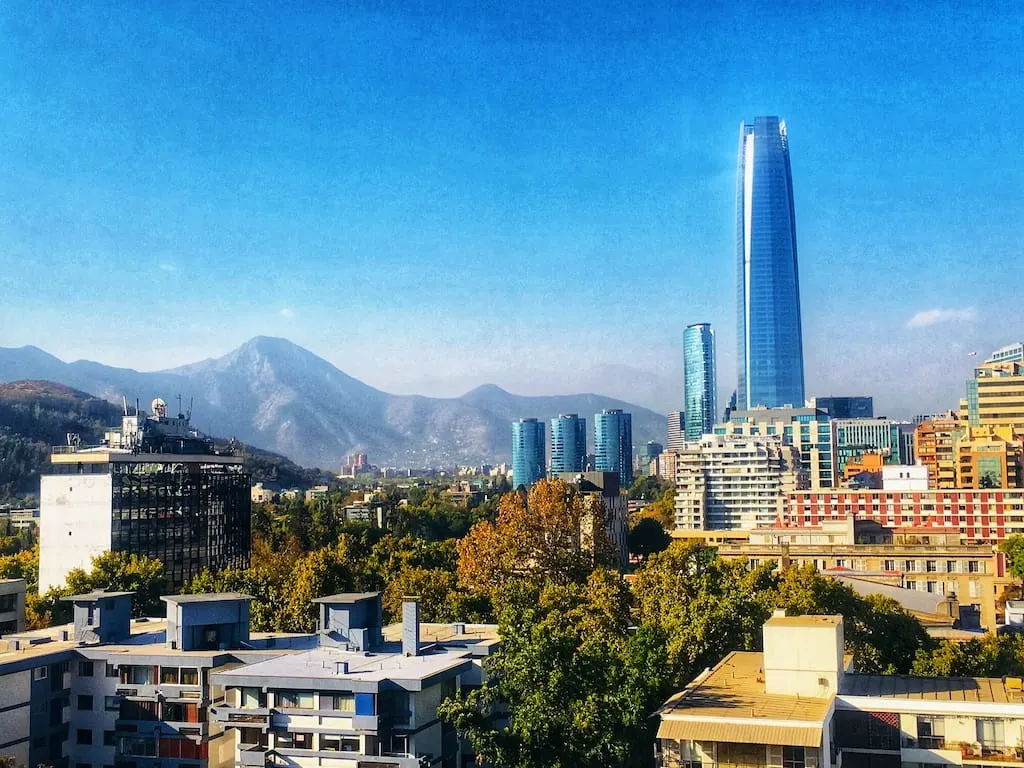
Isla Magdalena
One of the best landmarks to visit in Patagonia is Isla Magdalena. This island in the middle of the Magellan Strait is famous for its penguin colony. Even though it is tiny in size and only measures around half a square mile, 120,000 penguins live here.
Besides the penguins, a few park rangers reside on the island. They monitor the penguin colony as well as the impact of tourism on their behavior.
Fortunately, their research indicates that the penguins don’t seem to mind the tourists at all. If you want to visit, take a boat from Punta Arenas. Ships leave from the Tres Puentes harbor, but you have to book your ticket with one of the many tour agencies in town first.
The ride takes two hours, and you then have one hour on the island to watch the penguins. Make sure to stick to the path and keep a distance to the animals. Even though they don’t mind the tourists, this is still their territory. Plus, you don’t want to step into one of their burrows accidentally!
The best time to visit is between September and March when the penguins come here to breed. In April, once their young ones have grown old enough, the birds then swim to Brazil, covering a distance of around four thousand kilometers. Up here, they spend the winter months until returning to Isla Magdalena in spring.
Even if you visit in summer, a harsh wind blows on the island. Make sure to take a warm jacket. Besides that, bring your camera and lots of space on your SD card. Isla Magdalena is a paradise for photographers. If you’ve always wanted to take fantastic penguin photos, this is your chance.
Explored by Daniel and Ilona from Top Travel Sights
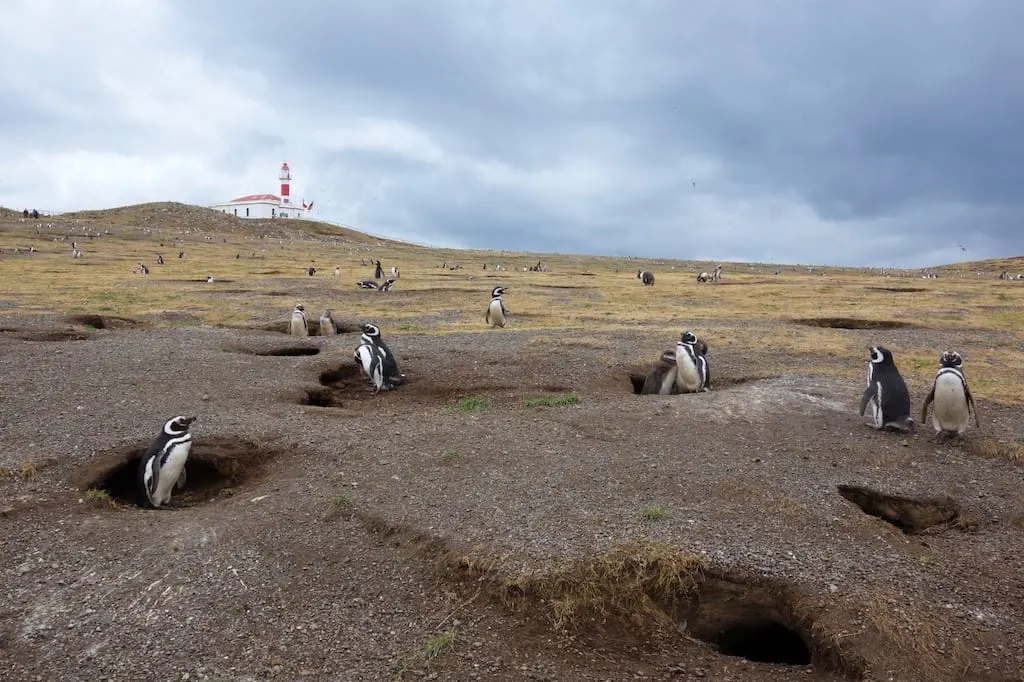
La Chascona
No visit to Santiago is complete without spending some time at the iconic home of Chilean master poet Pablo Neruda. Located in Barrio Bellavista, one of Santiago’s most charming neighborhoods, a visit to La Chascona is sure to be one of the highlights of your trip.
Neruda had the house built for the woman who was to become his 3rd wife, Matilde Urrutia, with whom he was having an affair at the time of its construction in 1953. They married a few years later, and he christened the house “La Chascona” (which means “woman with tangled hair”) in her honor– as the story goes, he adored her wavy red hair.
There is a beautiful portrait of Matilde in the house by Diego Rivera (yes, the Diego Rivera married to Frida Kahlo!) The house is marvelous, with all sorts of unique additions and architectural oddities, as well as artwork, sculptures, and Neruda’s writing desk and Nobel prize.
Tip: It is strongly recommended to arrive at La Chascona as early as you can, preferably right when it opens at 10 am. Keep in mind that it is closed on Mondays. Tickets cost 7000 Chilean pesos each, or 2500 for students (about $8 and $3 USD, respectively), and are sold on a first-come-first-serve basis. Only a few people are allowed inside at a time. The folks who work there are very protective of the house, and photography is only allowed outside.
The price of your ticket includes an audio tour, which is fantastic and highly recommended– it takes you through the contents of the house item by item, weaving in history, storytelling, and quirky titbits about Neruda’s life and Chilean history. It is available in several languages: English, French, German, Portuguese, and Spanish.
When you first enter, there is a brief film about Neruda’s life, which is also very informative and well-done. Before you leave, make sure to spend some time in the attached bookstore, which has lovely copies of all of Neruda’s most famous works in a variety of languages.
Explored by Tegan from Why Not Walk Travel Guides

Marble Caves
The Marble Caves are one of the most impressive natural landmarks in all of Chile. These caves are made entirely of marble, and their unique shapes were created from years of erosion caused by the lake where they are partially submerged, Lago General Carrera.
The erosion is said to have taken place over some 6,000 years, which has revealed interesting colors on the cave walls that contrast with the turquoise lake beautifully. It’s simply picture-perfect!
Despite this, the Marble Caves are often missed by tourists due to their remote location that is well off the beaten path in Patagonia. In fact, getting to the Marble Caves can be a little challenging and time-consuming.
The caves can only be reached by boat departing from the shores of a small town called Rio Tranquillo. Public buses to Rio Tranquillo are not frequent, with occasional buses departing from both the town of Chile Chico near the Argentina border and the city of Coyhaique to the North. Of course, if you’re renting a car in Patagonia, then you can easily drive to Rio Tranquillo along the Carretera Austral (Highway 7.)
Once you’ve arrived in Rio Tranquillo, you can either jump on one of the many motorized boats that will take you on a short tour of the Marble Caves or rent a kayak and visit on your own. Expect to pay around 10,000 CLP for a seat with others on a full boat, or 35,000 CLP for a kayak for a couple of hours.
Explored by Bailey from Destinationless Travel
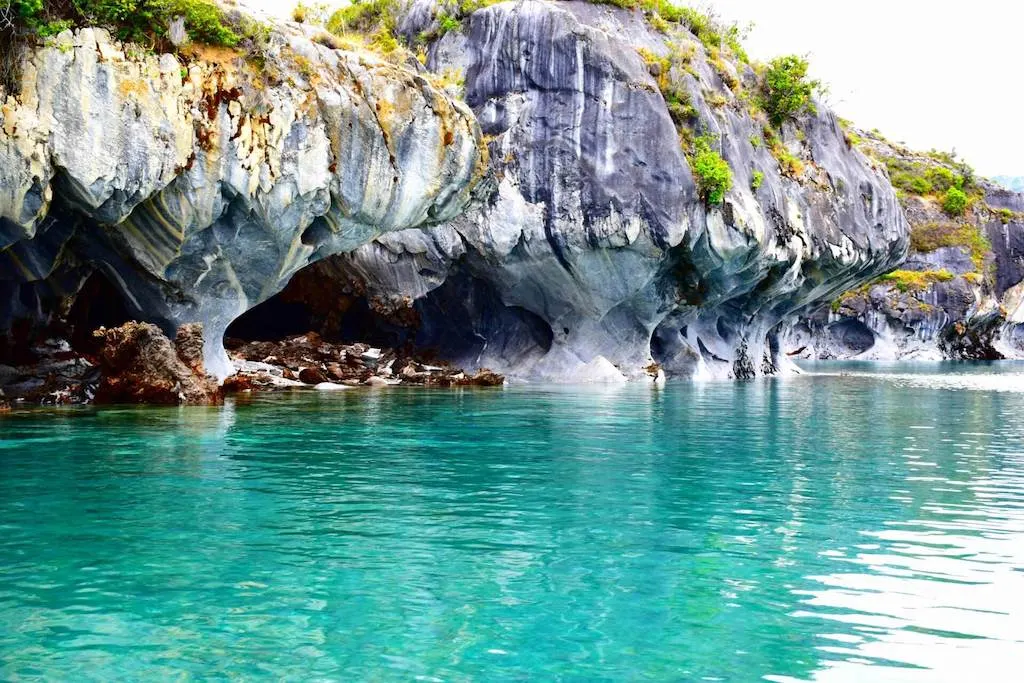
Museum of Memory and Human Rights
If you are traveling across Chile, you should definitely spend a few days in its capital Santiago. The city, beautifully nestled within the Andes, is certainly more than meets the eye and a great place to learn more about the history, culture, and overall vibe of the country.
One of the unmissable things to do in Santiago is visiting the Human Rights Museum – or better, the Museo de la Memoria y Los Derechos Humanos. Hardly a place to be merry, this incredibly well-curated museum is where to go if you are keen on finding out more about the troubled past of the country, its bloody dictatorship, and the human rights violations that occurred throughout.
Through documents, audios, letters, media pressings, video testimonials, you will be taken on a journey from the days of political unrest to the day when Pinochet was finally overthrown. The museum is big, but the exhibit is very well organized so you won’t have trouble taking in all the information.
Factor in a minimum of two hours for your visit, though to be fair, this is a place that deserves at least half a day.
The Museo de la Memoria y Los Derechos Humanos is located on Matucana 501, around 35 minute’s walk west of Santiago Cathedral. Should you want to get there by metro, take L5 from the Plaza de Armas. The museum is open Tuesdays to Sundays from 10:00 am to 6:00 pm. It is closed on 1 January, 1 May, 18 and 19 September, and 25 December. Admission is free, as well as guided tours. Audio-guides are available for $2.50.
Explored by Claudia Tavani from My Adventures Across The World
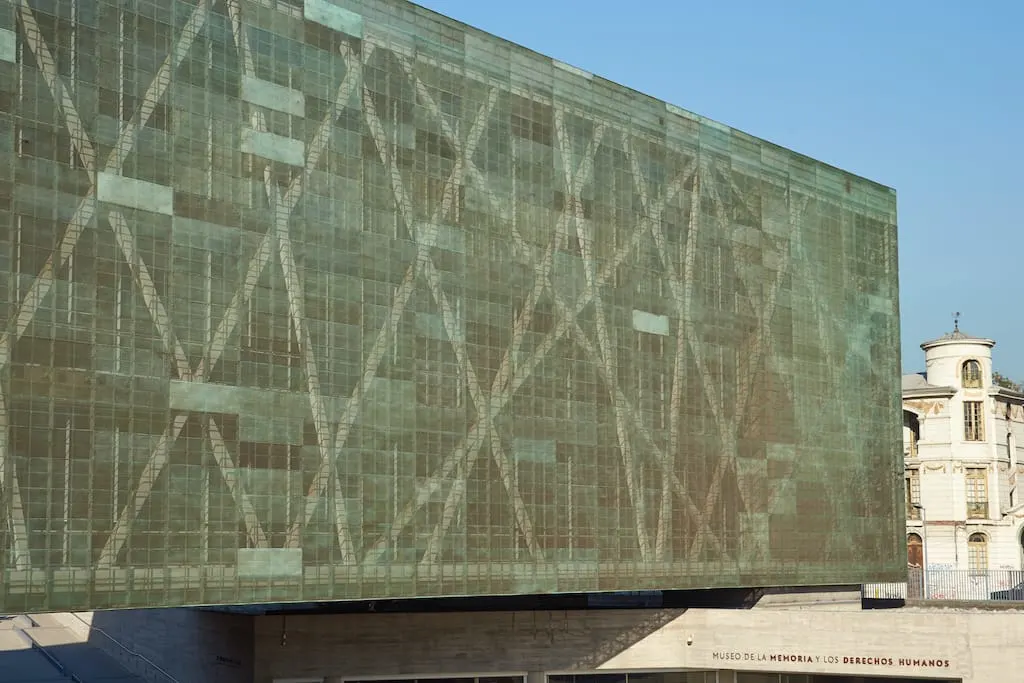
Plaza de Armas in Santiago
A crowning jewel in Santiago, Chile, the Plaza de Armas or Square of Weapons, is the city’s main square. The Plaza is at the heart of Chile, dating back to 1541 when Spanish colonialism was making its way through Latin America.
Originally intended as a gathering place for protection during an attack, the square became the cornerstone around which the square grid pattern of the city was designed. Today, the Plaza is the point from which the distance to everywhere in Chile is measured.
The Plaza is surrounded by the historic homes of Chile’s original elite, and the beautiful Santiago Metropolitan Cathedral is on one of the square’s corners. Prominent repurposed historic buildings are the Central Post Office, formerly the Governor’s Palace, and the Natural History Museum, formerly the Royal Court of Justice.
At the center of the Plaza is a small park shaded by Chilean palm trees. Here there is a fountain commemorating Simón Bolívar, who in 1818 liberated Chile from the Spanish. This single event is one of the most significant in the Chilean psyche and attracts visitors to the Plaza from around the country.
The Plaza is very popular with the city’s residents on weekends and holidays. It’s not unusual to see street performers, artists, people playing chess, or couples sitting quietly. At times high school groups come to the Plaza to perform as an orchestra or as a choral group.
A great way to see the Plaza de Armas and historic Santiago is with the Hop-On, Hop-Off Santiago bus. It may sound touristy, but it’ll give you the best overview of the city in the shortest amount of time, so you can decide where you want to explore deeper. The Plaza de Armas is a highlight of any visit to Santiago. Hop-off and spend some time making new friends and getting to know Chile.
Explored by Lori Sorrentino from Travlinmad.com
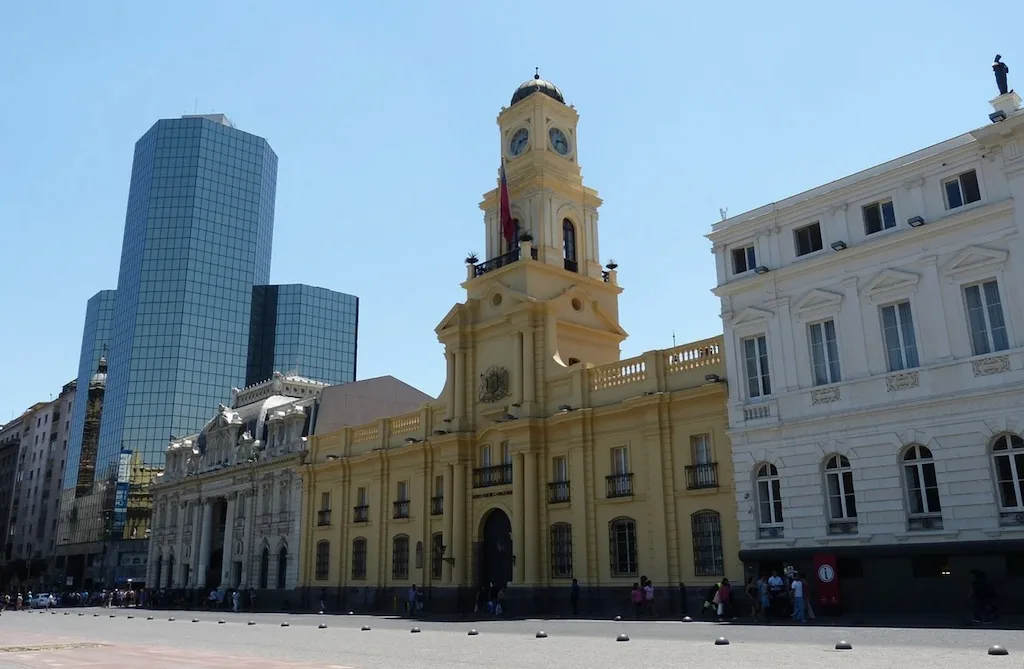
San Alfonso del Mar
The private resort of San Alfonso del Mar in Algarrobo is approximately 100 kilometers west of Santiago. When you are dreaming of a holiday on the beach in Chile, you need to look no further. It just doesn’t get any better than San Alfonso del Mar.
The incredible private resort in Algarrobo has essentially a view of 2 coastlines simultaneously. Of course, it overlooks the vast Pacific Ocean, but also it boasts views of the world’s biggest pool, a gigantic construct that is 1,013 m ft long, covers 8 ha (20 acres), and contains some 250 million liters (66 million US gallons) of seawater, with a maximum depth of 3.5 m (11.5 ft).
At the time of completion in 2006, it was deemed by the Guinness Book of World Records to be the largest pool in the world by area – and when you see it, you’ll immediately know why it is a landmark of Chile.
This saltwater pool offers the same clear-crystal turquoise sea color at the Pacific Ocean next-door (which isn’t surprising as that is where its water is sourced). Its size is truly difficult to grasp: the swimming pool occupies more space than 15 football fields and has a nightclub, beach club, aquarium, multiple hotels, and apartment complexes on its periphery.
Created by a visionary Chilean businessman who has also developed and constructed many (smaller) lagoons manufactured throughout the world, the pool is even wide enough to sail around. Plenty of other water sports and events are offered to guests (and guests only – you need to stay here to access it), including kayaking, swimming lessons, all kinds of water fitness classes, a waterslide, and more.
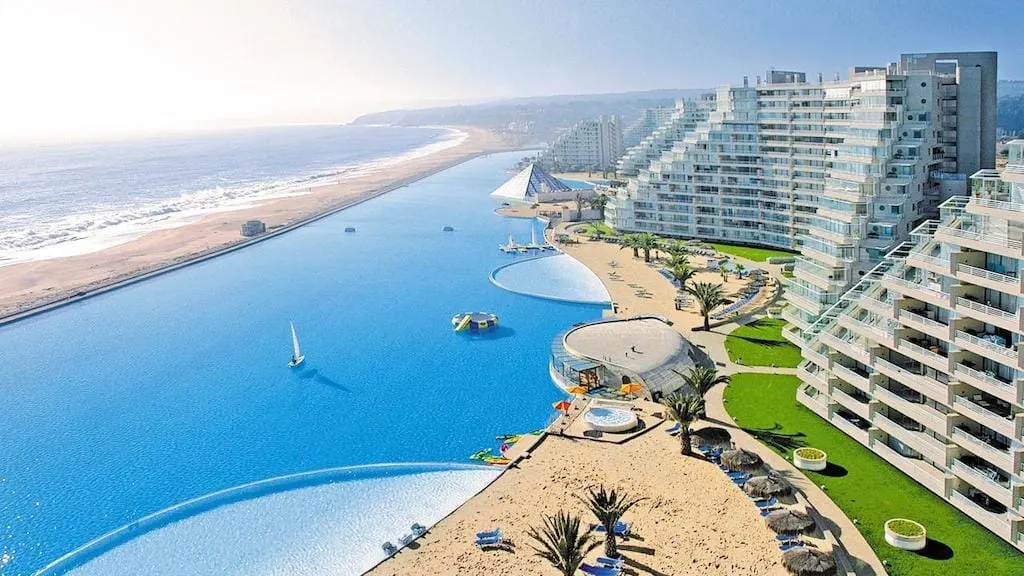
San Rafael Lagoon
The proglacial San Rafael Lagoon is another physically gargantuan landmark of Chile measuring approximately 15 kilometers long (north to south) and 10 kilometers wide (east to west) with a depth of up to 200 meters.
One of the most popular tourist attractions in the area of Aysén and Patagonia Lagoon of San Rafael is connected to the sea by the Témpanos River and — owing to the influence of the tide —its waters are unusually salty even though the great inflow of freshwater from the glacier would typically result in freshwater glacial lagoons.
The wall of the glacier is more than 50 meters high, and while visiting, it is common to see massive bits of ice separate and fall straight into the lagoon. Interestingly, this is the glacier that reaches sea level closest to the equator in the southern hemisphere.
Considering that its icy slopes record the rates of ice loss over thousands of years, the San Rafael glacier has become a focus of interest for climate change monitoring. Sadly, however, it is rapidly receding (along with 90% of all other glaciers in Patagonia).
The San Rafael Lagoon and its glacier are situated entirely within the national park of Laguna San Rafael, where the National Forest Corporation or CONAF (a Chilean private, non-profit organization), maintains a small office and facilities within the park, with a beautiful camping area.
Some unique wildlife can also be seen in this national park, including rare birds, dolphins, and sea lions – which explains why UNESCO designated this park as a World Biosphere Reserve in 1979.
One of the most spectacular day trips in Patagonia, visit the stunning San Rafael Lagoon and glacier before it is too late…

The Hills Of Valparaiso
The Historic Hills Of Valparaiso Chile are another famous landmark of Chile that rises above the town’s main port area. In many cases, the hills have communities tied to the specific hills’ name, but together they are famed for their cute cobblestone streets, cable car transport, and colorful street art.
Local guides will tell you there are, in fact, 42 hills, but lower hill communities often get mislabeled and merged into others, so it is hard to get an agreement with everyone. Either way, losing yourself in the hills of Valparaiso should be top of your plans when visiting Chile. Along the way, you can discover the legends concealed in its narrow staircases, creaky funiculars, and charming houses.
Some top highlights include the famous El Peral Funicular, the magnificent Paseo Yugoslavo, and the Baburizza Palace, which houses the Municipal Museum of Fine Arts. From the peaks of the hill, you will get stunning views out over the main port and bay, and find plenty of local restaurants to enjoy the vistas from.
Not to mention some of the freshest seafood you are ever likely to try.
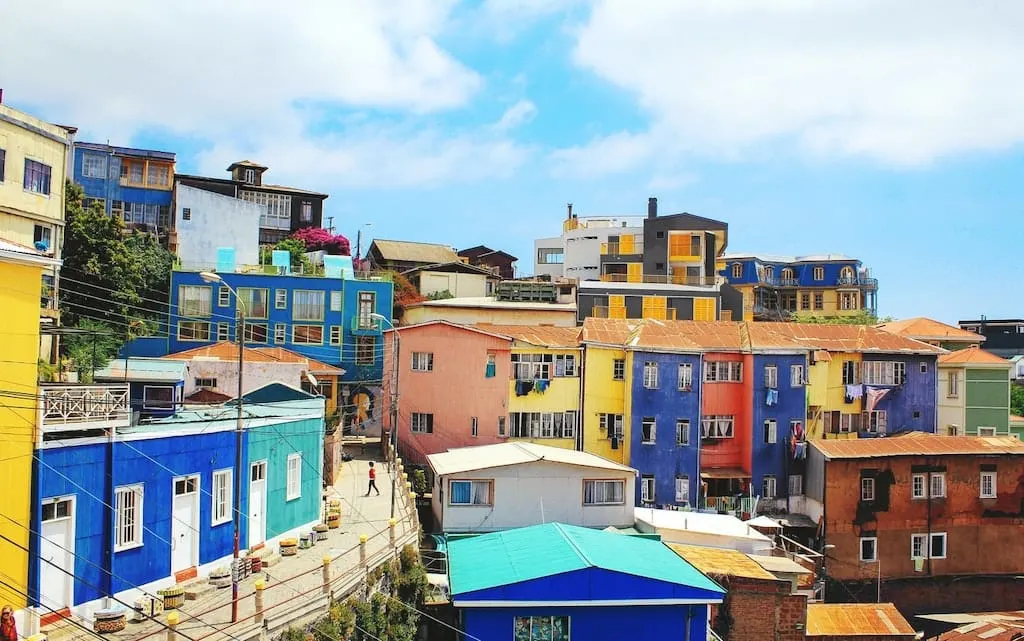
Valle de la Luna
Valle de la Luna or ‘the Moon Valley’, a renowned landmark in Chile, is also one of the key attractions near San Pedro de Atacama in the North of Chile. It is situated in the range of the Salt Mountains, west of San Pedro and south of a new highway that crossed into Argentina.
The Moon Valley is a fascinating stone and sand formation region, and despite its hostile environment, it is protected as a ‘Sanctuary of Nature.’ The vast dunes, valleys, and hills of salt, rock, and sand are unique, and their magnificent geological forms, which have been eroded by the passing of time, combine to create an otherworldly landscape reminiscent of the moon.
The Valle de la Luna is found in a small salt ground depression, and its unusual sculptural shapes are the product of a sequence of transformations induced by the rolling of this watery surface below the salt lake upon the Earth’s crust.
There is no life here due to its lack of humidity, and it has been named one of the most inhospitable places on Earth. It was even used as a testing ground by NASA for Moons Rovers. Thankfully the Valle de la Luna is located close to the town of San Pedro, meaning you can hire a bike and head out for the day to explore it without much effort before heading north on a multi-day tour of the Bolivian Salt Flats.
Just be sure to take plenty of water and some protection from the sun, for obvious reasons.
